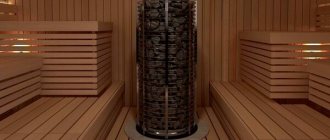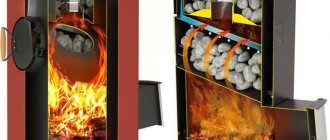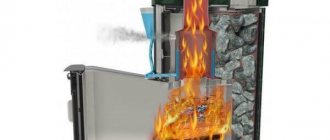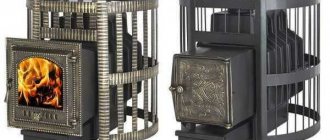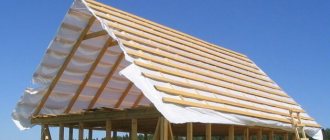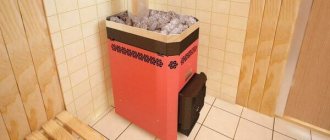A comfortable microclimate in the house has always been the merit primarily of the insulating materials used. We are talking about insulation, sound insulation, films, protective membranes and additional accessories. All this is designed to keep the living quarters warm, protect from rain outside and water vapor from the inside.
And every year, leading companies work to improve the protective properties of their products and make it easier to work with during the installation process. And the most famous products on the Russian market of insulating materials are Izospan. Let's look at its advantages and types, as well as what the letters A, B, C, D and F mean in the marking of rolls. The main thing is not to get confused!
A little about the manufacturer: why does everyone know about it?
Gexa company is one of the largest manufacturers of nonwoven materials for building insulation. The company itself is relatively young, operating since 1998 and began as a small family company. Today, Gex already employs more than 2,000 employees, and even has its own representative offices in neighboring countries.
Thanks to the availability and thoughtfulness of its products, Hexa quickly captured a large part of the market for similar products, while also developing geosynthetics for road construction and a stable production of disposable clothing for medical workers. Today there are about 15 of its representative offices in Russia.
By the way, Izospan is one of the very first brands of insulation produced domestically. Among builders, all these films and membranes are so well known that they have already received a household name. True, today the company has to actively fight against mass counterfeiting of its films, which differ in quality for the worse and spoil the entire impression of the brand.
Also, Izospan films are well known among the population due to the fact that they are always available. This is a credit to Hex's logistics system. But sometimes you have to look for other brands all over the city; you’re probably familiar with this situation.
In addition, Izospan is constantly working to improve its product; for example, it recently released a three-layer moisture-windproofing membrane with an anti-condensation coating. Another interesting new product is heat-saving insulation based on kraft paper with lamination with metallized lavsan, which we will talk about later.
General principles of application
The film is laid from bottom to top with the strips overlapping each other by 10-15 cm. The joints of the strips are glued with tapes such as Izospan KL, KL+. Izospan B is always mounted with the smooth side facing the insulation. The places of contact between the sheets and laths of the sheathing, and the counter laths of the air gap are sealed with a special sealing tape. The tape is pressed with the self-adhesive side simultaneously against Izospan B and the abutment surfaces.
Areas connecting to windows, niches and openings for utilities (ventilation, sewerage, water supply) are sealed with Izospan ML proff tape material. The same tape is used to finish joints with concrete and wooden structural elements.
Quality and range: everything to protect your home
In total, the Izospan line of insulating products has an assortment that is conventionally divided into 4 groups:
- windproof waterproofing vapor-permeable membranes;
- waterproof vapor barrier films;
- universal materials that work in several directions at once;
- heat-steam-waterproofing materials with additional energy-saving effects.
Here is an explanatory illustration of how exactly all these materials differ:
A roofing pie with films from Izospan looks like this:
Series A are windproof materials, and series B, C and D are hydro-vapor barrier membranes. If you are afraid of getting confused in abbreviations, remember a simple rule: the first letter means the insulation class, and the second means the modification.
If there is no second letter, then the material is classic, without additional frills:
Plus Izospan produces a special tape designed specifically for this product:
This manufacturer also produces special waterproofing materials for flat inversion roofs. The company itself always boasts that it creates all its products in automated production facilities.
And this is evidence that technical control is constantly being exercised over the quality of products. This cannot be achieved with any kind of handicraft production.
Insulated flat roof
Regardless of the flooring material, the insulation of a flat roof is protected from vapors from the room. For these purposes, one of the types of vapor barrier is used: Izospan D, RM, C, RS.
Installation of vapor barrier is carried out according to the following scheme:
- the film is rolled out over the slab (the side of installation does not matter);
- the canvases are overlapped, the amount of horizontal and vertical overlap of the strips is 15-20 cm;
- overlaps are taped with Izospan tape;
- Insulation and covering are installed on top according to the roof design.
External protection of house structures from wind and rain: Izospan A
All films of group A protect insulation and roofing elements from the negative effects of the external environment, and all others protect both external and internal at the same time.
Here we are talking about a wind-moisture-proof membrane that protects the insulation from rain, snow and wind. At the same time, this membrane also removes condensation from the fleecy side. Such films are fixed to mineral wool or polystyrene foam from the outside.
As for newer modifications, Izospan AM and AQ are made of three-layer film, which makes it possible to increase the level of protection of buildings. Also in group “A” there are separate options that are resistant to high temperatures and fires.
Let's take a closer look at the tasks for which Izospan A films are used and what their technical characteristics and properties are:
Izospan AQ Proff
So, the waterproof hydro-windproof membrane Izospan AQ Proff is vapor-permeable and is designed to protect the insulation and roof structure from environmental influences. Namely, from moisture from rain.
Why vapor permeable? The fact is that such a membrane must remove water vapor from the insulation directly into the atmosphere. If it begins to interfere with these vapors, then moisture will begin to linger in the insulation itself and mold will develop.
But at the same time, on the other hand, waterproofing must have a certain water resistance. In a word, on one side it allows water to pass through, but on the other it does not. Izospan suggests using the professional three-layer superdiffusion membrane Izospan AQ Proff for these purposes:
By the way, all Izospan films marked Proff have special markings in the form of a grid with 10x10 cm cells. This is specially made for easy installation; dashed lines along the edges of the film indicate the overlap line. For example, vertical lines are applied in 1 meter increments, making the film easy to cut without first measuring with a tape measure.
Izospan AQ Proff is laid directly on the insulation, without leaving any special ventilation gaps, thereby saving on the installation of sheathing.
This membrane also has excellent light resistance, making it suitable for installation as a temporary roof. It is also highly durable, which allows installation in any weather, even in strong winds.
Izospan AM: protection against heat loss
Izospan AM is a vapor-permeable material that removes water vapor from the insulation directly into the ventilated gap. At the same time, it remarkably protects the thermal insulation from precipitation that accidentally gets under the roofing, as well as condensation:
The film of this brand has high resistance to mechanical loads. Additionally, it serves as a wind barrier, preventing air from passing through the thermal insulation. This, in turn, significantly reduces heat loss.
Izospan AS: as many as three layers
The Izospan AS membrane has two important functions: windproof and moisture-proof. It simultaneously protects both the thermal insulation layer and other roofing elements. To do this, the membrane has three internal layers, each of which was developed for its specific task.
Unlike other films, this membrane can be laid directly on thermal insulation, without a special gap for ventilation. To some extent, this simplifies and reduces the cost of the very design of the roofing pie.
It is also suitable as a component for insulating floors and facades, and lasts for 50 years (as the manufacturer claims):
But remember that the entire Izospan AS line is always installed only on the outer side of the insulation directly under the finishing roofing covering.
Vapor barrier laying technology
After choosing a vapor barrier, it is also very important to install it correctly. This is not difficult, but requires care when installing, since in most cases the vapor barrier material has an external and internal surface in relation to the insulation
Choosing a side
Among builders, there are two opinions on which side to lay the vapor barrier against the insulation. Some believe that the vapor barrier should be attached only to one “correct” side, while others believe that it does not matter which side the vapor barrier is attached to. All vapor barrier membranes come in two types:
- for one-sided installation, this type of vapor barrier is attached to only one side;
- double-sided, which can be worked with regardless of its side.
Before installing the vapor barrier, you should carefully study the instructions included with the material itself. If there is none, remember these simple rules:
- The outer side of the vapor barrier has a pile in which moisture is retained and then evaporates. The inner one is smoother. It is the smooth side that should come into contact with the insulation.
- If the vapor barrier material has a different color, then the light side will be the inner side and should lie on the insulation.
- Usually the vapor barrier is sold in rolls. When rolling out such material, the side that will be facing the floor will be the inner one.
If you still have doubts, you can do a small experiment. Take a small piece of vapor barrier membrane and cover a mug of hot water with it. Condensation will appear on the side of the film that is waterproof, which means the inside.
Installation of vapor barrier film on the ceiling
After determining the inner and outer sides of the vapor barrier, there are no further questions about how to properly lay the vapor barrier. But still, a few nuances need to be taken into account:
Before laying the vapor barrier, it is necessary to carry out preparatory work
First of all, it is necessary to treat all wooden elements with special agents against insects, fungus, rot and fire. Subsequent work should be carried out only after the impregnation has completely dried. Irregularities on the surface to which the vapor barrier will be attached should not exceed 0.5 cm. If the house is located in a climate zone where there are frosts below -25˚C in winter, then a vapor barrier must be laid on both sides of the insulation. When installing, pay special attention to the corners
It is important that the corners are covered with a solid film. It must be well stretched. At the joints of the canvases, the vapor barrier must be laid with an overlap of at least 10-15 cm. With less overlap, moisture can penetrate inside
With less overlap, moisture can penetrate inside
It is important that the corners are covered with a solid film. It must be well stretched. At the joints of the canvases, the vapor barrier must be laid with an overlap of at least 10-15 cm. With less overlap, moisture can penetrate inside
Seal the joints with tape
You need to use special tape, preferably the same brand as the vapor barrier. The film is attached to the beams using a stapler. If installation is carried out between beams, you can use slats and screws with a wide head.
Laying vapor barrier on walls and ceilings
After installing the insulation on the walls, a vapor barrier film is laid. Which side to lay towards the insulation was discussed above. You just need to consider the following:
- The vapor barrier must be well tensioned so that it does not sag, there are no unevenness and so-called waves.
- The joint should overlap 5-10 cm and be securely taped with wide tape.
- The film should fit tightly to the insulation.
- Near window and door openings, it is necessary to leave 2-4 cm of vapor barrier film “in reserve”, since shrinkage or deformation of the material may occur during operation.
- There should be a small gap between the vapor barrier and the facing material for ventilation and condensate removal.
- After laying the vapor barrier, it is necessary to cover it with finishing material as soon as possible, since this material is “not friendly” to sunlight. If you leave the vapor barrier uncovered for just one season, ultraviolet radiation will do its dirty work and all your work will go down the drain, and the vapor barrier membrane will have to be replaced.
When laying a vapor barrier film there is nothing complicated and no special skills are needed. The main thing, as with any other work, is to be careful, take your time and read the instructions of the manufacturers of the material you are working with. Then there will be fewer mistakes, the house will be warmer, the mood will be excellent and you will be proud of your creation.
Line of vapor barrier materials: Izospan B
Izospan B is a vapor barrier with universal properties, suitable for any task and any room (except perhaps for saunas, they have their own line). This film perfectly protects walls from water vapor and can withstand temperatures from -60 to +80 degrees. One of its sides is rough, designed to hold condensation and slowly evaporate it.
It is made from polypropylene non-woven fabric and another additional polypropylene film. These two materials are securely glued together and never delaminate.
By the way, it is with this type of film that most questions arise about which side to mount Izospan on: rough or smooth? Indeed, there is a difference. But you can easily find the right side by touch, don't worry.
Additionally, this film prevents the penetration of small volatile insulation fibers directly into wall or roof structures. This is extremely important, especially if mineral wool insulation was used. In simple terms, in order not to breathe “prickly” air in a cozy attic:
Working with this material is not difficult, because... With Izospan B films there are always detailed instructions for use and calculation of the material.
But the slightly improved Izospan B Fix has special adhesive tapes directly on the film.
Insulation problem
Thus, each person releases on average about 100 grams of water vapor per hour when breathing, which is 2400 grams per day. In addition, steam is generated as a result of everyday activities - washing, drying clothes, cooking, taking water procedures (about 3000 grams in total).
In total, per day of living in a house, a family of 3 releases more than 10 liters of water into the air. If this moisture is not removed outside the house, it can condense on building structures and roofing. Moisture saturation also harms the building’s insulation, reduces its efficiency, increasing thermal conductivity.
Moisture that is not removed from building structures in a timely manner promotes the proliferation of mold fungi and putrefactive bacteria, house dust mites and other pests. Gradually, the walls are destroyed, mold spores are released into the air of the interior space, and the atmosphere in the rooms becomes harmful to health.
Two sides of one film: Izospan S
Izospan S is another type of hydro-vapor barrier. It differs from simple films primarily in that it also has a double structure - smooth on the inside and rough on the outside.
This film is also denser and more durable, and therefore suitable not only as a vapor barrier, but even as additional insulation. And its rough part is attached inside the building.
It is recommended to fix such a vapor barrier to the roof using galvanized nails:
Izospan C is also often used as a waterproofing agent during the installation of cement floor screeds in rooms with high air humidity.
Recommendations
When working with Izospan S, you should follow several recommendations from experts:
- The quality of insulation depends on the reliability of the joints between materials. More attention should be paid to this issue. To reliably seal them, Izospan FL tape is often used.
- The connecting points of the material and the elements of the building structure are covered with Izospan SL tape. If this tape is not available, then you need to use another material, after consulting with a construction specialist.
- After completing the necessary set of works, it will be almost impossible to correct anything, since these joints of materials will be located inside.
- To secure the material, galvanized nails or construction stapler are most often used. The choice is always yours.
- If the finishing coating is a cladding , then Izospan S is secured with vertical wooden slats. It is advisable to treat them with antiseptic solutions.
- If the finishing is made of ordinary plasterboard , then galvanized profiles are used. They must be prepared in advance.
- When installing Izospan S, it should always be with its smooth side facing the insulating material, if one is used. This is a very important rule.
For non-insulated roofs: Izospan D
The next type is Izospan D. These are materials based on polypropylene fiber, even more durable and reliable. They are even allowed to be used as shelter for up to four months. But, first of all, Izospan D serves as a vapor barrier for wooden roofs and cold walls. Sometimes it is also used as a layer for cement screed, like Izospan S. This is what this insulation looks like on the spread:
Let's make a short digression that will explain to you why all these details are so important, and why there are so many types of all these films, although it was possible to release one universal one. The quality of the vapor barrier directly affects the service life of both the roof and the house itself. That is why experts always advise giving preference to materials only from a well-known manufacturer who is concerned about its reputation.
After all, even with high-quality material it is usually difficult to create an absolutely sealed insulating layer, let alone thin and short-lived films. And during its operation, the insulation, if it begins to accumulate moisture, will quickly lose all its properties, thereby nullifying all efforts to construct the walls and roof.
Just imagine for a moment that you spent a lot of time and money on building a house, and within six months you began to notice the smell of mold. This is very very bad.
Another common problem is the leakage of the vapor barrier layer at the joints. Namely, poorly glued sheets. To solve precisely this problem, the Hexa company began to produce new products in 2022 - Izospan B Fix and Izospan D Fix.
Their difference from previous products is that there is already special adhesive hair pre-applied to the canvas. They not only facilitate the installation process itself, but also truly ensure reliable fastening of the canvases to each other.
When working with such material, you no longer need to worry that the construction tape will touch this particular area, pull and tear off a piece, or lie unevenly, or simply turn out to be of poor quality and easily peel off.
By the way, the D line also has a subtype - DM, films with a special anti-condensation coating that perfectly retains random droplets of moisture:
Installation plan
Installation of Izospan B has features depending on which element of the structure needs to be protected.
For attics and attic floors
The installation diagram is shown in Figure 1.
First you need to unroll the roll and cut the ribbons to size. To determine which size of panels is most convenient and economical for installation, it is necessary to measure and mark the walls and ceilings. Then you need to apply the first tape to the internal insulation of the attic or attic (from the ceiling side) with the smooth side and secure it.
The fastening method is chosen which is more convenient for the owner: it can be fastened with a construction stapler or on nails. The first tape in attics must be laid from below, parallel to the floor. For convenience, the tapes can be rolled into tubes with the desired side inward and unfolded as they are secured.
Next, you need to secure the following tapes in the same way, overlapping the previous one with an overlap of about 15 cm. Seal the joints with a special tape such as Izospan KL, KL+ and mount the lathing for cladding or finishing material on the coating. For ventilation and evaporation of possible condensation, the gap between Izospan B and the cladding should be 50 mm.
For interfloor ceilings
The installation diagram is shown in Figure 2:
Installation proceeds as follows:
- Unroll the roll and cut the ribbons to size;
- secure the first tape with the rough side to the rough ceiling (floor) using a stapler or nails;
- fasten the remaining tapes parallel to the first, with an overlap of 150 mm;
- seal the joints for sealing with the appropriate tape of the Izospan family;
- install the sheathing and lay insulation.
Next, you will need to lay another layer of Izospan B with the smooth side facing the insulation, secure it to the sheathing and seal the joints.
On top of the insulation, it is necessary to provide a ventilation air gap (gap) of 50 mm using counter slats on which the finishing cladding can be installed.
Specifications
Release form:
- width, m - 1.6;
- size, m² - 35, 70.
Properties:
- Composition: 100% polypropylene;
- Maximum tensile force in length/transverse. direction, N/50 mm, not less: 197/119;
- Vapor permeability: vapor tight;
- Water resistance mm.water column, not less: 1200;
- UV stability, months, not less: 3-4*.

